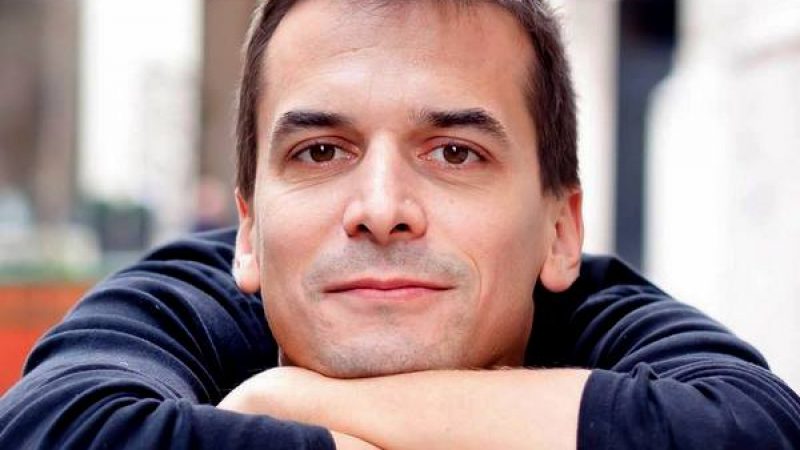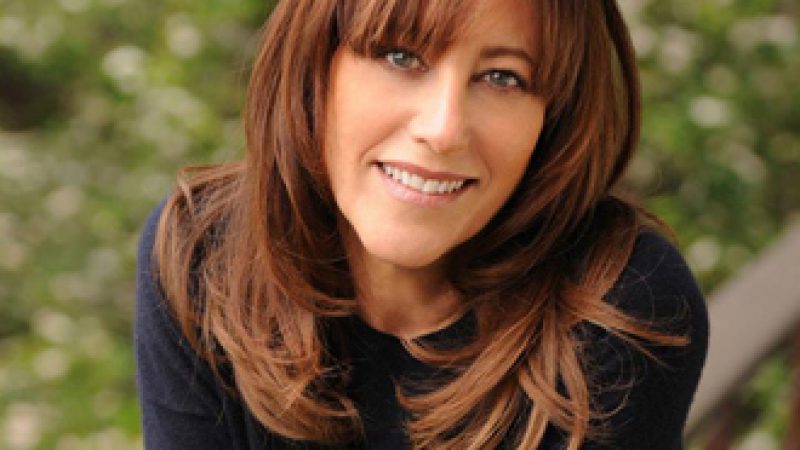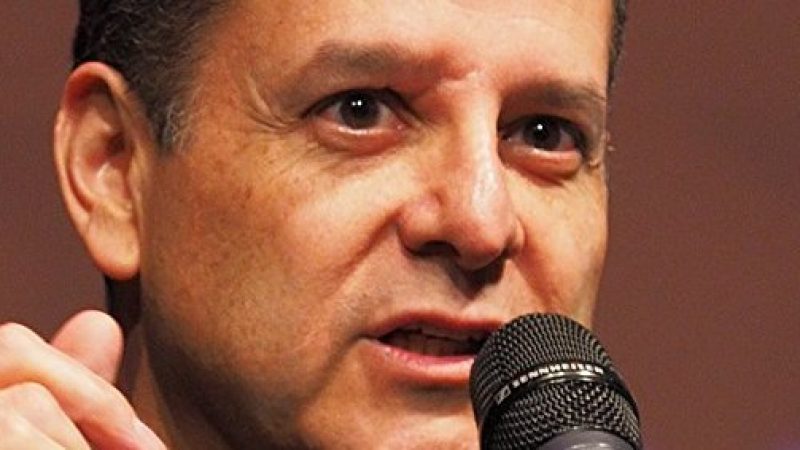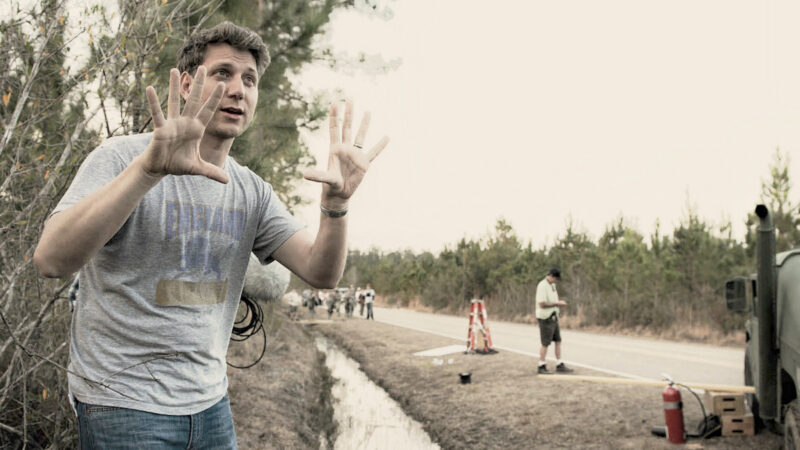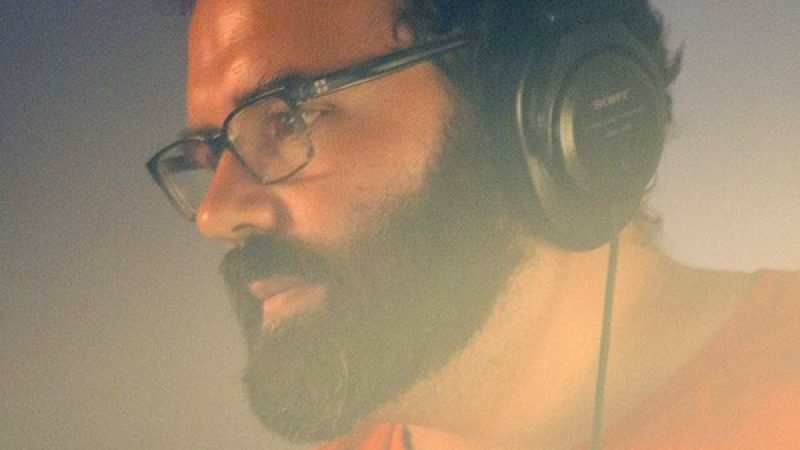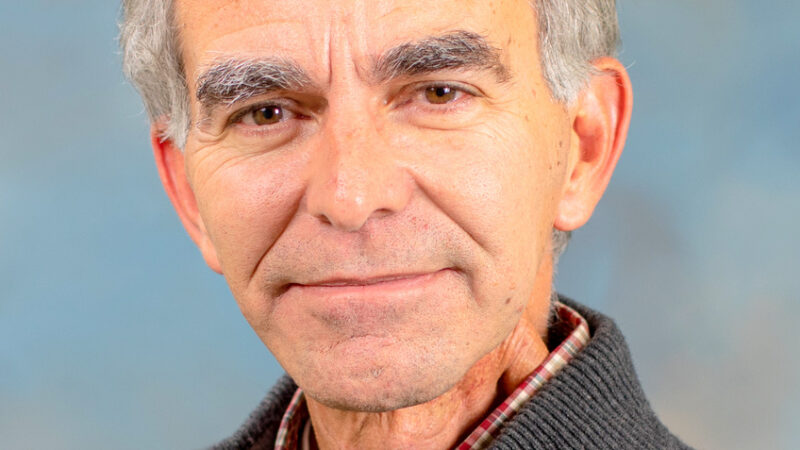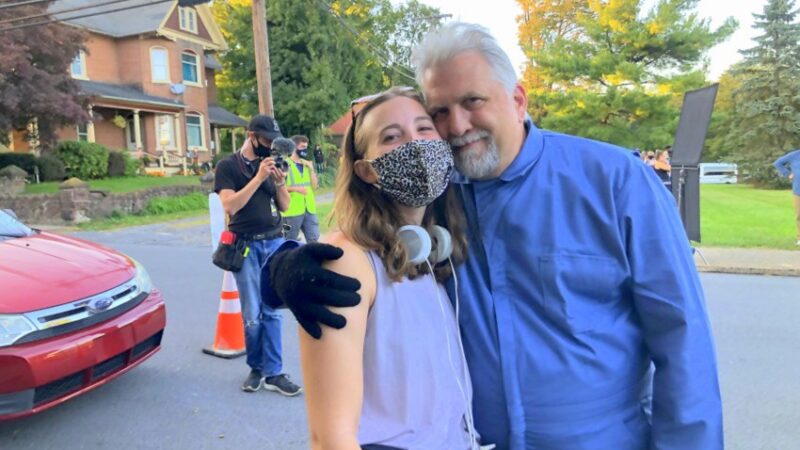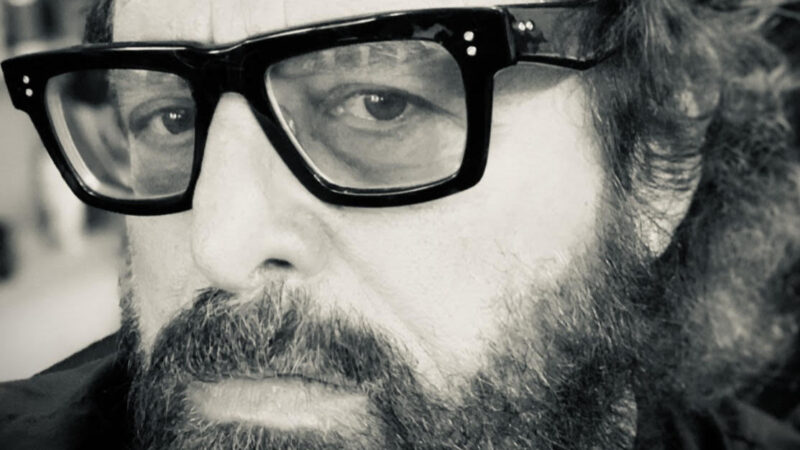
Director Amy Glazer Brings Kepler’s Dream to Life
An 11 year old searches for a missing rare book from her grandmother’s library
How I Made My Film, ‘Fear, Love & Agoraphobia’ by Alexander D’Lerma
A Step by Step Filmmaking Process of Fear, Love & Agoraphobia
The Key Facts Behind How Jeff Nichols Made The Indie Hit MUD
Jeff Nichols gives himself directorial challenges to master on every project.
In Conversation with Michael Oblowitz Director of Confidential Informant
Confidential Informant stars Mel Gibson, Dominic Purcell, and Kate Bosworth
Evergreen
Date: 29th June 2019
Director: Joe Duca
Producer: Justin Graver, Kristin Jones, Marshall Kistner, Savvas Thomas Yiannoulou
Writer: Joe Duca
Lead Cast: Tanner Kalina, Amanda Maddox, Olivia Grace Applegate, David Bianchi
indieactivity : What is your film about?
Joe Duca : “Evergreen” was directed by Joe Duca and produced by Marshall Kistner, Justin Graver, Kristin Jones, and Savvas Yiannoulou. Principle production was financed by Daffy LLC (comprised of Kistner, Graver, Jones, and lead actor, Tanner Kalina) in conjunction with a crowdsourcing campaign and independent investors. Production was completed over ten shoot days in December of 2017 on location in Meeker, Colorado, using ARRI digital equipment. “Evergreen” made its World Premiere at WorldFest-Houston International Film Festival 2019, screened via DCP. As of May 2019, the film has won four awards, including the Houston Broadcast Film Critics’ awards for Best Picture, Best Actress (Amanda Maddox), and Best Supporting Actress (Olivia Grace Applegate), as well as a Gold Remi in the narrative feature category at WorldFest-Houston.
Set against the rustic winter backdrop of the Colorado Western Slope, “Evergreen” is an intimate character study of an interfaith couple’s relationship over a tumultuous Christmas weekend. Paul and Gena have been in a committed relationship for over a year and are at a pivotal point in their lives. Paul is a modern day Catholic, whereas Gena is anything but; Paul wants marriage, while Gena needs physical intimacy and to take their relationship to the next level. When expectations clash, the two set aside their prior notions and agree to a brutally honest, no-holds-barred weekend of “question-and-answer,” unearthing long-buried secrets and manifestations from relationships past.
The story carries underlying themes of identity, memory, love, and loss to reflect how individuals conquer external battles and internal grief with the common goal of finding harbor within each other. “Evergreen” takes a hyper-realistic look behind the veil of a common, modern relationship and reveals how the boundaries and barriers that define our conditional love can be stripped down to reveal deeper truths.

indieactivity : Tell us about the festival run, marketing and sales?
The initial premise for the film was born from a simple idea: maximizing economy. Lead actor Tanner Kalina and producer Marshall Kistner had spent years developing stories together, trying to gain traction in the Hollywood system. In the spring of 2017, the two sat down and pitched a series of ideas to each other, all based around practical resources they could leverage to make their first feature film on their own terms. Kalina threw out an idea about a Christian couple stuck in a cabin during a snowstorm who decide to “break bad”; and he knew the perfect location to shoot it.
The two ran with the idea and quickly wrote a 25-page, heavily improvised outline of the story. During the outlining process with Kistner, Kalina would bounce ideas off fellow filmmaker Joe Duca, who became similarly invested in the story. After creating a patchwork quilt of ideas from all three, the group met for the first time in the summer of 2017 to set a plan in motion. While heavily collaborating on the script elements, Kalina would focus on getting into the mental headspace required for the lead acting role, Kistner would take on the producing and logistical duties, and Duca would conceptualize a vision for the film as its director. Kalina and Kistner passed off the 25-page outline to Duca, who spent the next four months converting the idea into a living, breathing script.
As the team splintered off to turn the project into a fully fledged production, Kistner began to build his producing team, still working within the confines of the “economy-first” mentality. He brought in previous collaborators, including his roommate, Justin Graver, his girlfriend, Krissy Jones, and Savvas Yiannoulou, whom he met years prior when the two interned at Roy Lee’s Vertigo Entertainment.
During this time, each member of the producing crew held down full-time jobs in the entertainment industry, which meant meetings were held in the evenings and on weekends to prep the film. A shoot date was targeted for the month of December, and through Kalina’s connections the team secured access to a secluded ranch property in Western Colorado. Once the litigation was finalized, Kalina, Kistner, and Duca traveled to location for a brief scout of the property. This process allowed the production team to accurately plan the shoot, and helped Duca continue to revise the script to reflect the reality of the location, incorporating landmarks and elements of the cabin into the writing.
When the three returned from the tech scout, pre-production ramped up to a manic pace. It was impossible to keep up with the workload while all the producers held full-time jobs, so Kistner decided to leave his and make producing this movie his full-time occupation in the fall of 2017.
Financing for production costs came from the core group made up of Kistner, Kalina, Graver, and Jones, who each put in personal money to finance the production. The group created Daffy LLC, which would serve as the production’s business entity moving forward. Through this and the support of a few private investors, the finances were established and a stringent budget was outlined, to be strictly adhered to.
With no budget for a lawyer, Graver drafted every production agreement and legal document based on his experience working for esteemed Hollywood photographer/director Matthew Rolston.
Kalina, known more for comedic projects prior to “Evergreen,” focused on developing the lead role with Duca. Both he and Duca felt it was critical for the character of Paul to hold himself to a certain “old Hollywood” standard. With Cary Grant and Jimmy Stewart as major influences during the development of the role, Kalina went through a significant physical transformation in order to turn the ideas of the character on the page into a full-blown reality. Kalina grew out his hair, maintained facial hair, went on a strict diet and exercise regimen, and adapted new idiosyncrasies during his routine rehearsals with Duca.
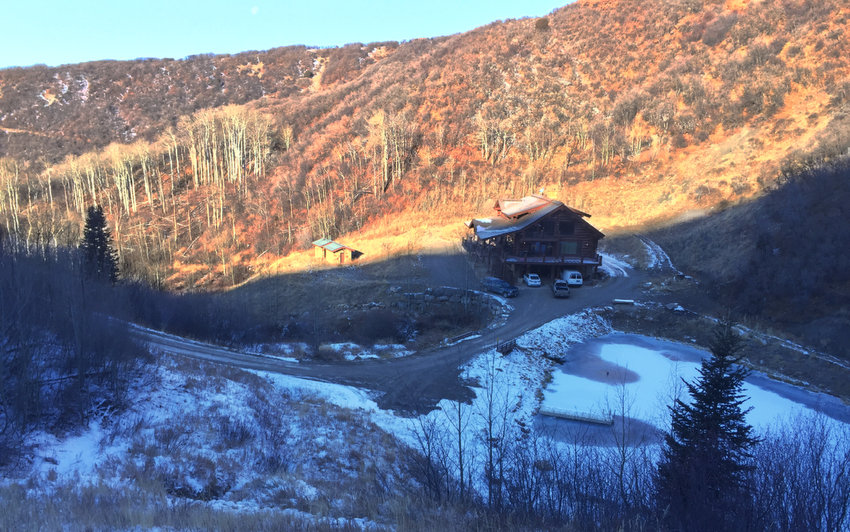
Olivia Grace Applegate soon joined the cast to play Cassie. She had been a close collaborator of Kistner and Kalina’s, having attended The University of Texas at Austin (along with Jones and Graver). Her familiar relationship with Kalina and Kistner, in addition to her incredible talent, made her the perfect fit for the role. David Bianchi, a friend and mentor of Duca’s, read for the role of Dylan and completely embodied the emotional complexities of the character in his audition. After conferring with the team Duca offered him the part.
With limited sleeping space at the location, Kistner focused on assembling a skeleton crew of filmmakers who could wear multiple hats on set. This meant relying on past relationships formed during his tenure at UT-Austin and working on various industry shows in Los Angeles. Garrett Forbes (1st Assistant Director), Tanner Nichols (Gaffer), and Will Harrell (Sound Mixer) had all worked on various short films with Kistner during college. Kistner would also bring on board Oliver Johnson (Production Designer), Jimmy Moreno (Key Grip/2nd AC), and Ian Mantel (Art PA), with whom he had worked on low-budget indie projects during their early post-grad years,
When Kistner’s initial choice for Director of Photography declined the project, Graver looked into some connections of his own. He’d met Matthew Plaxco through his day job; not only was Plaxco a multi-talented cinematographer, but he also encouraged the producers to bring on an expert First Assistant Camera, Ai Dang on Evergreen.
In need of a few Production Assistants focused on any and every other task that would arise, the last spots on the crew went to Duca’s father, Fred, and brother, Daniel.
As the shoot dates crept closer, the most important role in the film was still yet to be cast: the strong-willed, lead female character of Gena. Several actresses had previously read for the role, but none of them captured the essence of Gena the team was looking for.
Meanwhile, on Saturday mornings, Kistner and Jones played on an intramural soccer league, and easily the fiercest player on their team was an actress named Amanda Maddox. One day in the late fall of 2017, Kistner asked Maddox to read for Gena by recording an excerpt from the 1995 Richard Linklater film “Before Sunrise.” Duca, Kistner, and Kalina watched Amanda’s tape during a pre-production meeting the following week. Within the first 10 seconds, Duca pointed to the screen and exclaimed, “That’s Gena!” They had found her just in time.
(Fun fact: the character name of Gena was inspired by acting icons Gena Rowlands and Geena Davis!)
With the cast officially locked, Duca and the four actors entered an intense and unconventional month-long rehearsal process before production began on Evergreen. Duca and the actors discussed character exposition and motivation at length, often writing and rewriting lines on the spot based on their own personal experiences with love and relationships. Duca even had the actors run through unique acting exercises, including cooking with each other and spending time isolated together in a room in character, sans any script. Every rehearsal was accomplished in apartment complexes and coffee shops, with each individual contributing 25 hours or more per week to the preparation process.
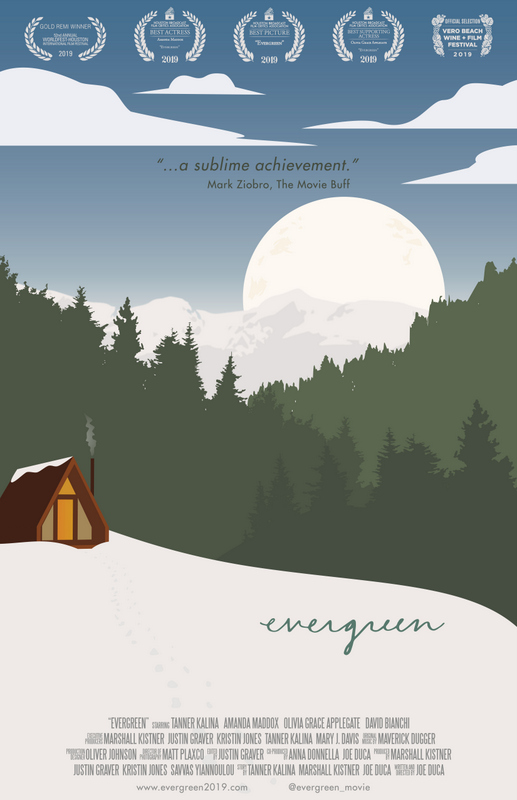
In tandem with rehearsals, Duca worked quickly to turn out drafts of the script, making further adjustments based on notes and advice from personal mentors as well as the producing team. As the script elements became clear, a lookbook was created by Duca and Graver for Plaxco to review, prop lists were sent to Johnson, and gear, food and supply lists lists were compiled and checked off. This included fitting nearly three weeks worth of lighting and grip equipment plus creative ways to feed the cast and crew into their minuscule budget.
Plaxco was able to provide the camera package, a couple of lights, and (after consulting with Duca) a list of necessary grip equipment. After receiving astronomical quotes from a few rental houses around town, Kistner went back to his connections. Through a former classmate who worked at a local rental house, Kistner and the team successfully negotiated everything they needed at a rate within their budget.
After several script revisions on Evrgreen and with the official start of production looming just one week away, the group convened via Skype for a final polish of the script late on Thanksgiving night in 2017. Yiannoulou and Duca met in Los Angeles while Kistner, Jones, and Graver worked remotely in Dallas. Over the course of that one night, the group added the finishing touches and finally achieved a fully locked, ready-to-shoot script.
In early December, with final preparations set in motion, the production team loaded all of the equipment and supplies into a rickety rental van and departed the following morning.
On December 4, 2017, the cast and crew arrived in Western Colorado from various parts of the country. After getting snowed in the first night (it was December in Colorado, after all), and a subsequent day of preparation, filming officially began on Wednesday, December 6.
Principal photography of Evergreen took place entirely on location at the secluded cabin property, tucked forty miles away from the nearest town. The cabin had very limited cell phone service and internet access, which created its own set of logistical issues, but also fostered an environment of true collaboration. Rather than toiling away on social media during takes, everyone on set would gather at monitor to observe the action and offer notes and ideas when needed.
Production ultimately took on the feeling of a film school summer camp, although the conditions were anything but. The ranch sat at a base elevation level of 8,000 ft. above sea level, making handling the heavy film gear an exhausting, laborious task. The bitter cold, which actually froze the camera one evening during a night exterior shoot, along with the threat of altitude sickness, forced crew members to take extra precautions.
Despite these sometimes difficult working conditions, the crew remained in good spirits. After tackling the day’s coverage, each night everyone would gather and spend quality time at base camp, where they could hang out and relax, play games, and participate in a nightly raffle, all in a concerted effort to maintain moral and mental health. The Evergreen team also received an immense amount of support from the nearby town of Meeker (population: 2,300), often receiving free hot meals, coffee, last-minute props from the locals, and even a few extras who appear in the final cut.
While weather conditions were certainly challenging, the most improbable feat to overcome proved to be the ultra tight shooting schedule. Most of the logistics were arranged according to two factors: the time constraints of shooting a 90-page script in a 10-day span, and the practical realities of working around talent availability. Applegate and Bianchi were only on set for half of the shoot days, which meant the crew essentially had to plan the movie around their specific scenes. Additionally, Maddox had to return to LA for a brief stint midway through production due to a conflicting shoot, adding another layer to the scheduling puzzle.
To stay ahead of these logistical challenges, the producing team would sit down with Duca, Forbes, and Plaxco every night post-wrap to go over the next day’s coverage and make necessary scheduling adjustments. The actors’ intensive rehearsals paid off in a major way, as production was rarely halted to feed a line or retake a scene. Ultimately, carefully coordinated preparation was crucial to accomplishing high page counts each day without running late.
On set of Evergreen, scheduling changes were implemented more frequently as more concise and cunning filmmaking practices began to take hold. With an “all hands on deck” approach, the crew was able to create complex setups that could be utilized in more ways than one. As the team realized they only had enough time in the day to film about four takes per setup, Duca and Plaxco took the liberties of shooting out entire scenes into longer, unbroken one takes. The scenes, becoming more free-flowing by nature, became quicker to shoot while enhancing the realism in the performances. Actors were allowed to really expand and explore their instincts as the space around them took on the feeling of a theatrical stage rather than a film set.
The isolation of living in the mountains for nearly three weeks also allowed the crew to achieve a stronger sense of professional chemistry than the average film set. Without the team-building nature of the project, and with a nearly impossible shooting schedule and limited financial resources, physical production very well could have been a failure. Instead, the production team was able to achieve a number of goals that every set should aspire to achieve, including:
- December 17, 2017, principal photography wraps – on time and under budget.
- Shooting Schedule Breakdown:
- 6 out of 10 shoot days – standard 12-hour work days
- 2 out of 10 shoot days – 13-hour days (one of which the team shot out an entire 24 script pages)
- 2 out of 10 shoot days – 10-hour work days
- No one was injured during production
- No production or rental gear was broken, lost, or stolen
- Location was turned over in pristine condition
- Every scene was covered and shot
During a brief production wrap period, the crew packed up the location in a matter of a few hours and then journeyed back home for a much-need hiatus…
Post-production began in January 2018, with producer Graver, who had edited short film collaborations with Kistner in the past, at the helm of a home-studio edit bay. Over the next several months, during weekends and evenings after his day job, Graver pieced together an assembly cut with input from the producing team using Adobe Premiere Pro editing software.
After two months of assembling footage, Graver previewed a whopping 2-hour-40-minute cut of the film to core team members. At this point, they also brought on Graver’s then-coworker, Anna Donnella, to help co-produce based on her experience running social media and marketing aspects for Matthew Rolston.
Duca and team provided insightful notes that improved the cut as the team worked tirelessly to fix the major issues and shorten the run time in the most compelling manner. By mid-May, the first working edit of “Evergreen” was complete, trimmed down to a two-hour cut that the team knew was still much too long.
The next step to getting the edit finalized involved screening the film for audiences comprised of friends and colleagues.
Inspired by mentor advice, the producing team formulated a complex and intensely detailed strategy to receive the maximum amount of useful knowledge out of the test screening phase of the film. The team formed a plan to watch the most recent cut the night before each test screening and come up with multitudes of questions for each and every scene that were used to create an extensive written questionnaire.
At the test screenings, audiences would watch the film, complete the written questionnaires immediately following the screening to gather raw reactions, and then participate in a lengthy, multi-hour discussion in regards to both big- and little-picture ideas that were presented to them on screen. In the interest of correcting flaws, the team specifically asked for positive feedback to remain a low priority throughout the discussion process.
The test screenings began with a very small group of six trusted collaborators with no affiliation to the project. After that first feedback session, the team went straight back to the drawing board to reinvent a new cut, preparing to present to an even larger group of viewers. Audiences continued to expand until the final two private screenings, which hosted approximately seventy-five guests each.
Freshly inspired to improve the film after this feedback, the team implemented new story elements and partially re-wrote moments of the script (using temporary ADR) for the final round of evaluation. This was accomplished over the next several weeks through a series of web screeners, each of whom completed updated versions of the questionnaire and participated in conference calls with the team to discuss the details.
The regular testing feedback over this period continued to reveal flaws in the structure of the film, so the team was frequently forced to think of creative ways to utilize the footage they’d captured. Certain shots, takes, and entire scenes were overhauled, used out of order, even scrapped entirely or otherwise repurposed in unplanned ways. New lines were written to fill in missing information or replace dialogue that no longer made sense. The puzzle of the edit revealed exciting new ways to present the film to audiences, and the efforts began to pay off. Characters and storylines that had tested quite low in early cuts of the film were playing to unanimous positivity by the final stages of picture lock due to the constructive criticism from the viewers.
While some of the team’s favorite moments did not end up making the final cut, the central story and emotional core of the film were resonating with the audience on a more consistent basis, and service to the story was always the top priority for the filmmakers involved. Eventually, enough feedback had been absorbed that the team felt confident moving the cut into the picture-locked stage of editorial at a tight 90 minutes.
Once the picture was locked in place, additional financing was needed to expand the team and complete post-production. After extensive research of other successful crowdfunding campaigns and a full month of preparation, the producing team put together an effort of their own through Kickstarter, with the goal of raising at least $6,000 for the bare minimum finishing costs. That goal was reached rather quickly, and the team continued to push the campaign over a limited two-week period to successfully raise over $15,000 with 150+ backers offering financial support.
Thus, the race to the finish was off. The picture-locked cut, as is typical in this stage of the editorial process, had been using a temporary soundtrack of music and unmixed production sound. Phong Dang, Kistner’s longtime co-worker in the LA independent film scene, connected the group to the sound expert duo of Colin Lechner and Marinna Guzy of Raconteur Sound. After a serendipitous story that revealed Lechner was not only raised in the area where “Evergreen” was shot, but that he was also visiting nearby the shooting location at the same time recording environmental sounds for his own personal sound libraries, the duo was signed to the project, agreeing to a rather intense workload. This would mean taking on every element of post-production sound in an effort to finish as quickly and as economically feasible as possible, including a full sound design creation, dialogue scrubbing, recording ADR and foley effects in house, and mixing everything into a final 5.1 surround sound mix.
Meanwhile, the temp music and notes from Duca and the producers were sent to the film’s composer, Maverick Dugger, who conceptualized and crafted a beautiful original score for Evergreen from scratch. Dugger held a series of recording sessions with trusted artists in a state-of-the-art recording studio that the team used after hours, conducting and allowing his cohorts to find the melody the film was looking for. Dugger also incorporated additional original music composed by Alex Roldan into his compositions, creating a fully realized and cohesive score that embodies the emotions displayed by the visuals.
Music licensing, an area the core team had little experience in, was deftly handled by Kistner’s childhood friend, Aubrey Caswell. Caswell became a tremendous force in identifying the perfect tracks for the movie that not only fit the right style and tone but could work within the economic constraints, while still providing artists of top tier quality. In addition to tracking down and obtaining the necessary music licenses, which is an extensive litigation process, Caswell also helped commission two original Christmas songs for the film, one of which was created, recorded, and mixed in a one-month span from Nashville-based singer/songwriter, Lydia Luce.
With a small micro-budget indie (Evergreen) that focuses on a romantic relationship, visual effects are not always a priority in the final edit. Due to the low-budget, high-octane shooting nature of this project, there were a few critical moments requiring cosmetic clean ups. VFX Producer Nathalie Fortunel, a college confidant of Yiannoulou, was able to enlist a small team of VFX artists that worked swiftly to tidy up the visual loose ends in high-grade fashion.
Stretching the budget for every dollar, Jimmy Moreno, who served on set as the Key Grip, was called upon to perform the film’s final color correction. Swapping out a coloring suite for a calibrated double monitor home studio setup, Moreno was able to conceptualize the consistent color palette that helped showcase the beauty of the natural elements captured during production.
Due to the incredible efforts of this highly professional post-production team, Evergreen had finally come together in only ways that the visual arts can provide. While massive effort went into getting the project through the physical production stage, endless sacrifices were made behind the scenes during the film’s final months of post-production. These moments, of which not many filmmakers discuss on platforms like this one, are really the few times where the creators get to see their ideas fully blossom in front of their eyes for the very first time. Post-production, while tedious, is the essential component to sparking “movie magic.” And with that, “Evergreen,” a project that started out as a one sentence idea on a seemingly insignificant day in the spring of 2017, had become an existing, imperfect, and unique little piece of art ready to be shown to the world.
Preparing for a festival run was a long and exhaustive process that began, like any project should, with research. Producer Kristin Jones spearheaded the film’s festival submissions and established contact with a multitude of programmers. She, along with the rest of the producing team, built a list of festivals that would champion the tone of “Evergreen,” targeting those based on location, demographic, and previous lineups.
Social media also played a huge role in the virtual presence of the film and the way it would be perceived by festivals. The team was conscious of the importance to engage with its audience, build a digital footprint for the work, and generate “buzz” — all elusive things that can go a long way with programmers researching their submissions before making final decisions. A well-populated, active social media page can serve as the greatest resume for a micro-budget independent film.
“Evergreen” started its festival run in April of 2019 with its World Premiere at the 52nd Annual WorldFest-Houston International Film Festival, where it took home the most awards of any feature film. This included the Houston Broadcast Critics’ Awards for Best Picture, Best Actress (Amanda Maddox), Best Supporting Actress (Olivia Grace Applegate), and a WorldFest Gold Remi Award for narrative features. In May of 2019, “Evergreen” played the Hunter Mountain Film Festival in New York, where it was awarded Best Director (Joe Duca). Following that, the film screened at Vero Beach Wine + Film Festival in Florida in June, with the Fort Worth Indie Film Showcase in July and plans (some not yet announced) for more throughout the 2019 festival season.
With many screenings upcoming, Evergreen is currently in the process of seeking distribution on streaming and VOD platforms along with a physical release. In closing, some advice from the filmmakers: “Treat people with respect and kindness, and above all else, prioritize the health, sanity, and comfort of your crew – they are the ones who make your ideas possible. Without them, the production, and the artform, is nothing.”
Follow Joe Duca on Social Media
Website
IMDb
Facebook
Twitter
Instagram

